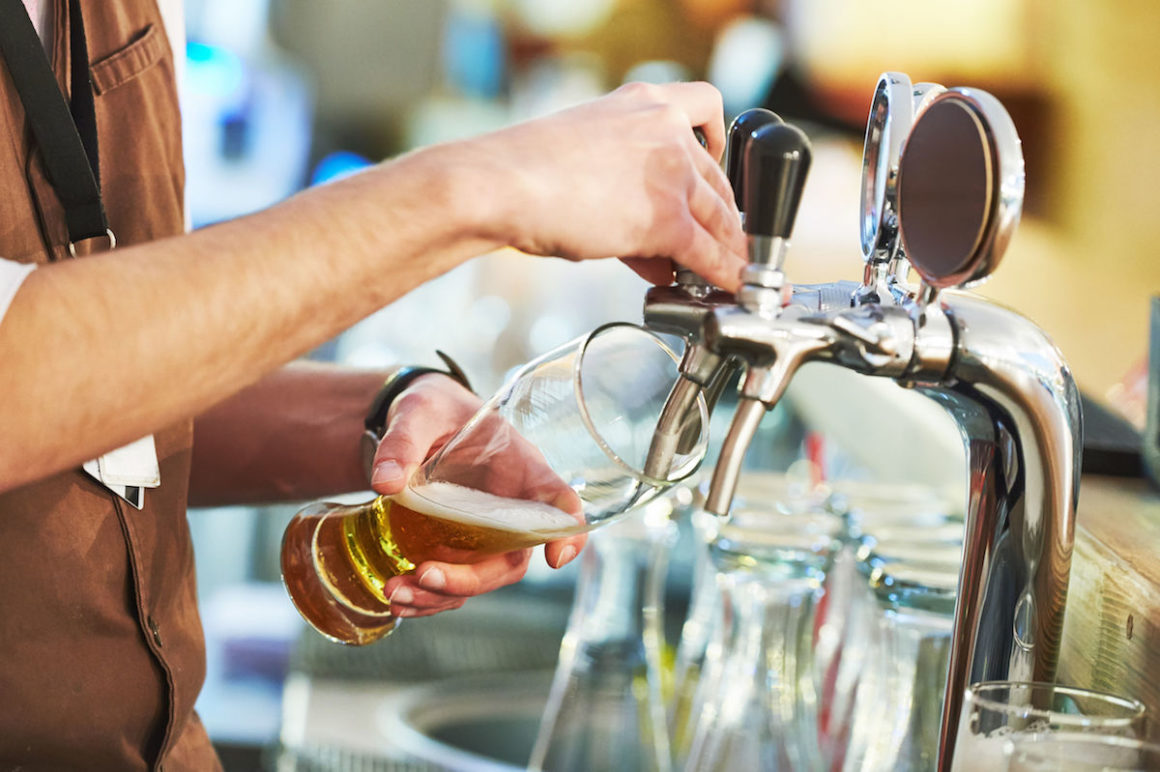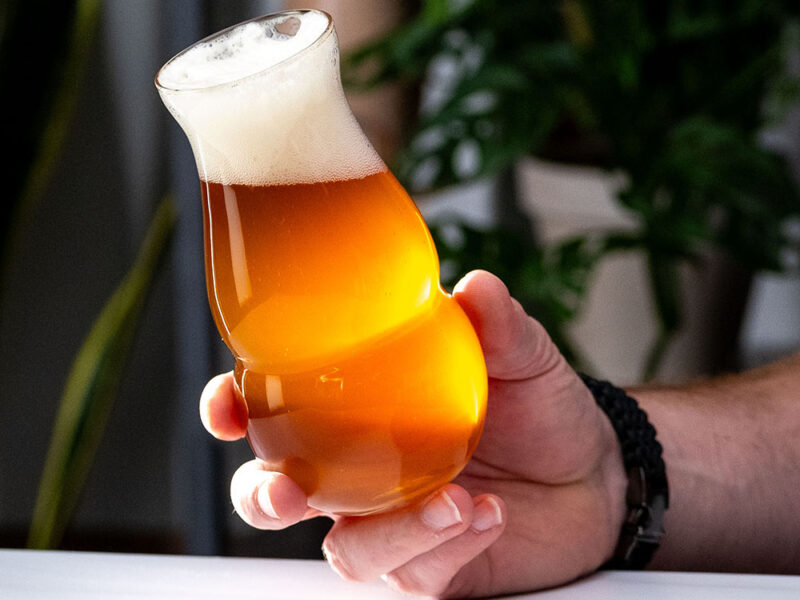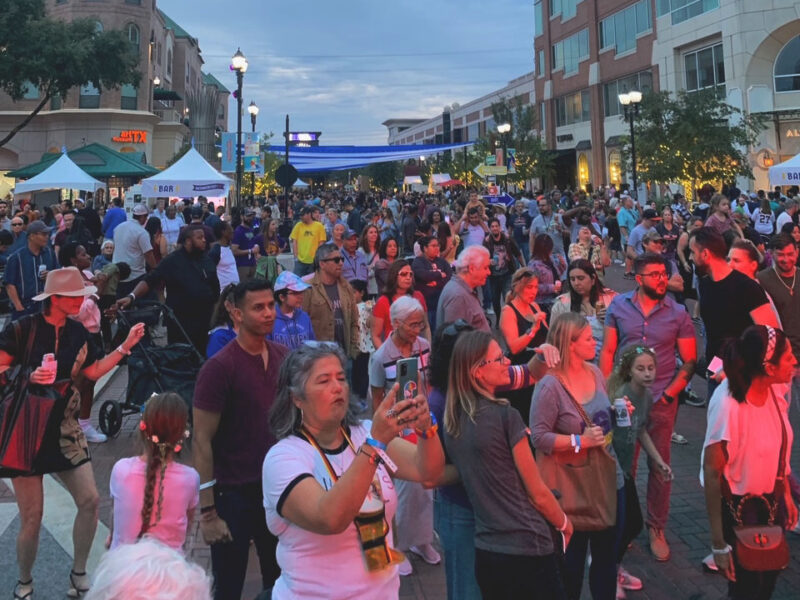Have you ever just flat out poured a shitty beer? We’re not talking about the quality of the actual beer but the quality of the pour. You know the one where you somehow wind up with a glass that’s 70% foam and not much else? You’re left with an empty bottle or can and wondering where the hell the tasty part of your beer went. How does that happen?
What about the opposite where you’re out at your local Saucer and you look up just in time to see your bartender pull the perfectly poured beer away from the tap and set it in front of you where you can experience the aroma being released from a beautiful head that stands maybe one to one-and-a-half inches thick? How the hell do they do that? How can YOU learn to do that?
We turned to some beer experts for advice on how they prefer to pour a brew, why, and how they came to pour it that way. So, pay attention and quit wasting perfectly good beers by not knowing how to pour.
“I prefer to pour beer out of the can into my mouth, but if it’s on draft I’ll usually tilt, pour along the side until it’s about 80% full, then pour right in the middle for the remaining 20%. I don’t think I was taught how to pour a beer, just something I figured out on my own or perhaps absorbed by watching others pour my beers. My pouring method helps me control the head pretty well to get the perfect amount of foam. Depending on the beer, I can adjust that last 20% to more or less to get just the right amount of head.”
Cody Martin – Owner of Martin House Brewery in Fort Worth, TX
“When it comes to pouring beer, my story starts with humble beginnings – namely being a college kid and trying not to get too much head when pouring beer out of a keg. With picnic taps, it’s all about pouring down the side of a glass to get as little head and as much beer as possible.
It wasn’t until I started working in the craft beer industry that I really developed my standard pouring style. Whether it’s from a bottle or draft, I start by slowly pouring at a 45 degree angle into the glass (never letting the glass touch the tap or bottle) and then leveling the glass off towards the end of the pour in order to produce a solid, but not overbearing, amount of head. Obviously adjustments must be made depending on the style of beer, style of glass, or level of carbonation – but the method remains the same. That might be pretty standard, but go with what works. And, as with anything that has to do with beer, I say do what works for you. Beer is fun!”
Dieter Friesen – A Little Bit of This, A Little Bit of That at Upstreet Craft Brewing in Charlottetown, Prince Edward’s Island
“Generally, I will pour a beer down the side of the glass until I’ve filled the glass about halfway, at which time I will slowly stand the glass back up so that I’m pouring the last 1-2oz right down the middle. Obviously, this doesn’t work for every beer – there are always some exceptions, like when pouring a hefe/wit from a bottle or a highly carbonated Belgian ale.
I’m not sure how/when I was taught to pour correctly, but taking the Cicerone exam really reinforced the importance of doing it correctly for each style of beer. A proper pour does make a big difference!
The reason I pour this way is to limit head formation to an appropriate amount while still releasing plenty of aromatics from the beer.”
Jon Powell – Owner of Hop & Sting Brewery in Denton, TX
“I start with the glass tilted and pour the beer down the side. About halfway through, I start slowing bringing the glass upright and finish pouring straight in the middle. I learned how to pour a beer from a bartending class I took when I was 19. I pour the way I do because I’m trying to get the beer into the glass without volatizing the CO2, causing it to come out of solution. The beer was packaged with the appropriate amount of CO2 for that beer, and I want to enjoy the beer how the brewer intended. I do want some foam, though, so that’s why I finish going straight in. For bottle-conditioned beers with yeast in the bottle, I don’t want to disturb the yeast and get it in my glass, so I’ll be careful to keep that back in the bottle. Some beers–like hefeweizens–, however, need that yeast. In those cases, I’ll stop pouring toward the end, swirl the bottle to get the yeast mixed up, and then pour that straight in to get a nice cloudiness.”
Austin Heisch – Brewer/BarrelMaster at Rahr & Sons Brewing Co. in Fort Worth, TX
“I usually pour all of my beers at an angle, down the side of the glass. I got my first brewery job when I was 21 and was shown how to pour beer without it foaming too much – tilting the glass, straightening the glass after about halfway ‘til the foam nears the top. That training has always stuck. No matter what I’m pouring, bottle or tap, I always start at an angled pour. Depending on the carbonation level, I’ll straighten up the glass sooner or later. If the beer is very carbonated, I’ll just pour a half glass and let some of the carbonation settle, but if it’s not too carbonated I’ll pour most or all of the beer at once.”
Peter Salmond – Head Brewer at Other Half Brewing in Brooklyn, NY




